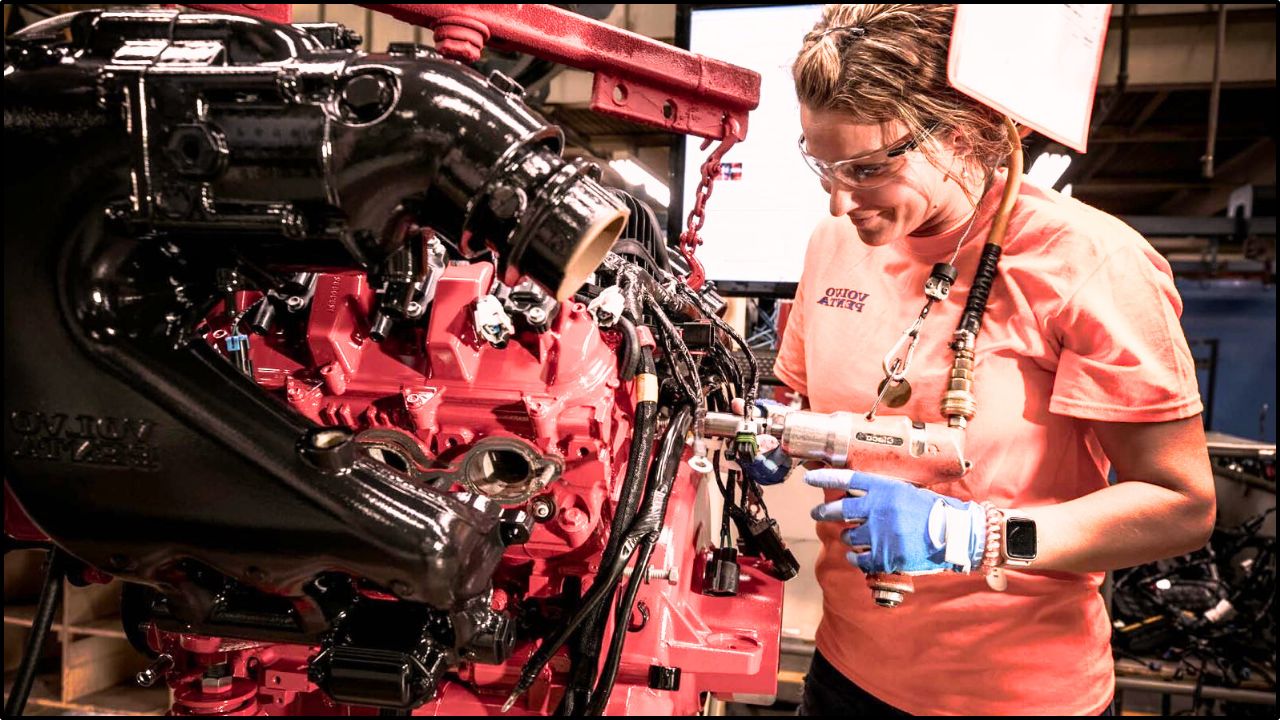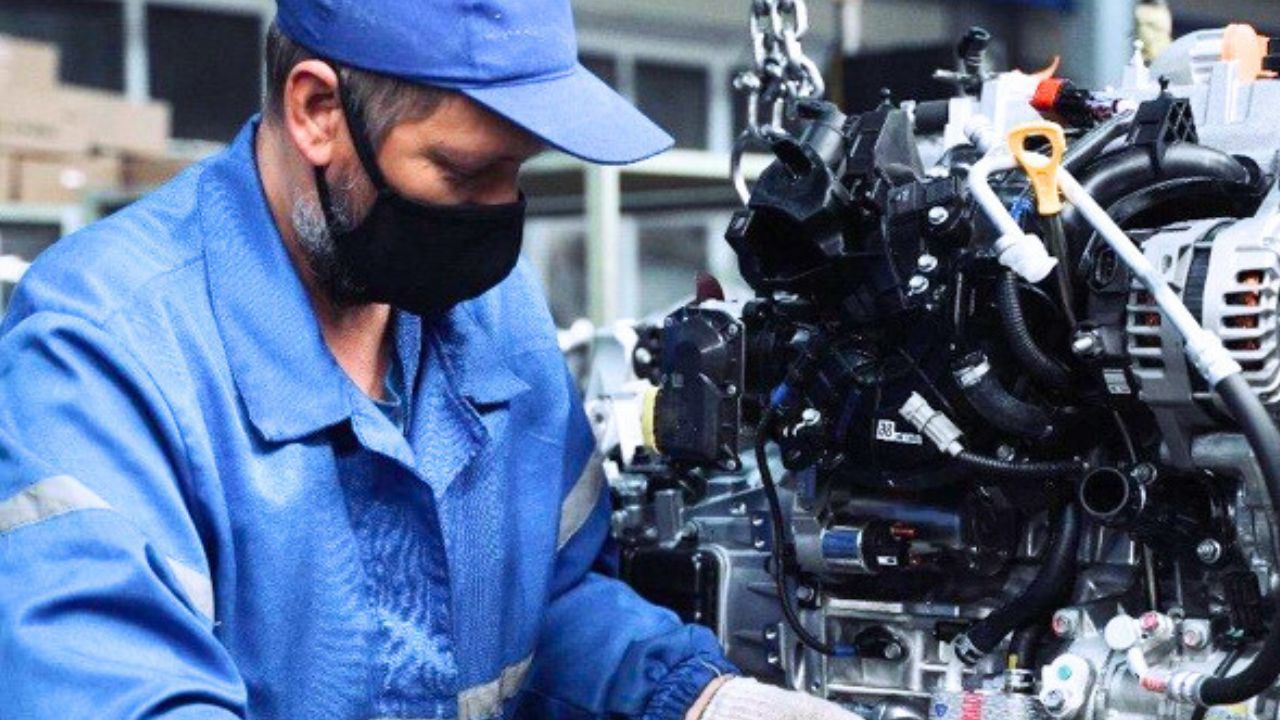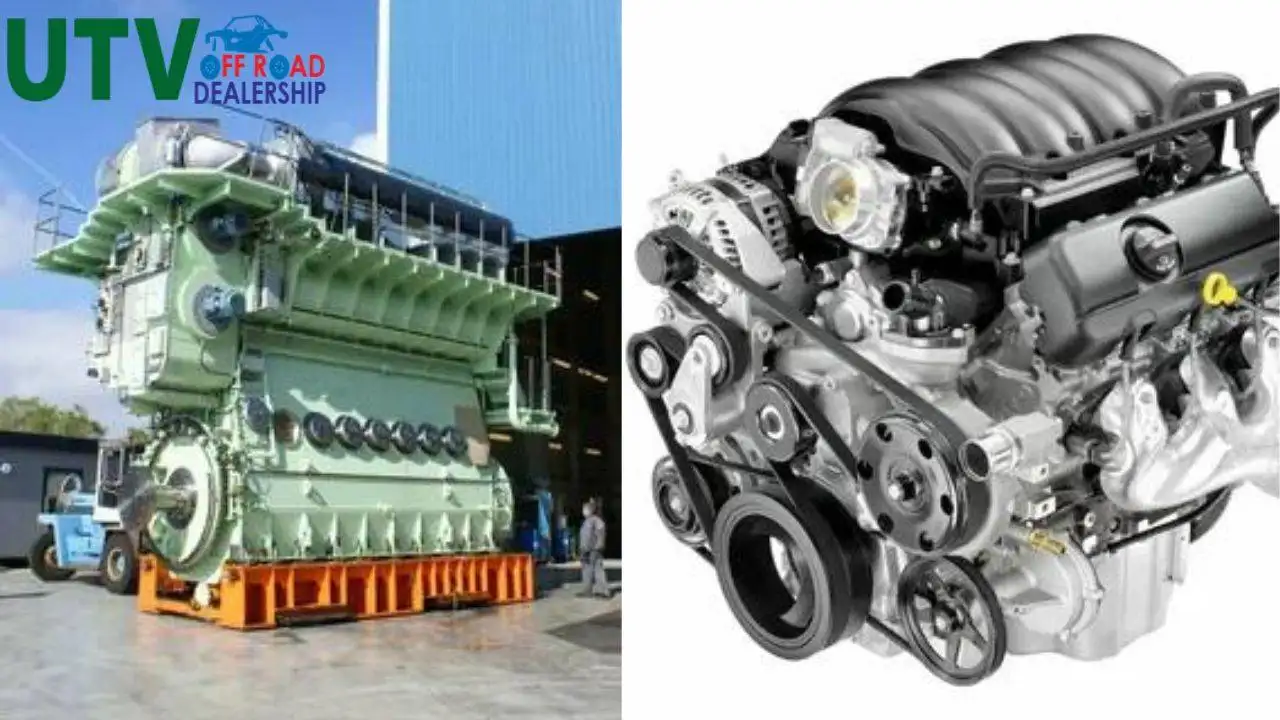Internal combustion engines are designed to convert fuel into mechanical energy. Examples of these engines are those used in vehicles and boats. However, they serve distinct purposes and operate under different conditions due to their unique requirements and environments. Now, discuss the key differences between marine engines and car engines, exploring their design, performance, and applications.
Operating Environment
Marine engines are specifically engineered to operate in marine environments, including saltwater exposure, constant vibration, and varying temperatures. In contrast, car engines are designed for land-based vehicles and are exposed to different conditions, such as road vibrations and temperature fluctuations.
Cooling Systems
Marine engines typically utilize raw water cooling systems, where water is drawn from the surrounding environment to cool the engine. Car engines, on the other hand, commonly use liquid coolant circulated through a radiator to dissipate heat generated during operation.
- Raw-water Cooling: Seawater is pumped through the engine, cooling it directly and then expelled. It is simple but risks internal corrosion from salt and debris.
- Closed-loop Cooling: Like a car, coolant circulates inside the engine and exchanges heat with seawater in a heat exchanger, reducing corrosion risk.
Saltwater Foe
The harsh marine environment demands special considerations. Marine engines are built to combat the constant threat of corrosion from saltwater. They use corrosion-resistant metals, specialized coatings, and marine-grade gaskets to ensure longevity and reliability. Car engines lack these features, making them vulnerable to rapid breakdown in a marine environment.
Cost
Marine engines typically have a higher price tag than car engines. This price difference stems from the intricacies of their design and construction. Marine engines are more complicated to create since they are made to withstand the rigors of maritime settings, necessitating specialist manufacturing procedures. Consequently, their elevated cost reflects the emphasis on durability, reliability, and meeting the unique demands of marine applications, setting them apart from conventional car engines.
Fuel Types
Fuel efficiency raises another important issue: the difference between marine and car engines in terms of light. While both marine and car engines can run on gasoline or diesel fuel, marine engines often require specialized marine-grade fuel due to the harsher operating conditions and higher demands for performance and reliability. Due to their lower revolutions per minute (RPM), marine engines tend to have lower fuel efficiency compared to car engines. This difference in operational profile distinguishes marine engines from their land-based counterparts.
Power Output
Marine engines are typically designed to generate higher torque at lower RPMs to propel large vessels efficiently through water. In medium-duty operation, Marine engines have a power range extending from 412 kW to 1,066 kW (560 HP to 1,450 HP). On the other hand, Car engines are optimized for higher RPMs and horsepower to provide quick acceleration and sustained speeds on roads.
The average horsepower for typical vehicles is around 180, ranging from 180 to just under 200 in some cases. For instance, crossovers typically have around 200 hp, midsize cars average 170 hp, and small SUVs reach 240 hp.
Engine Design
The design of marine engines underscores a significant difference between marine engines and car engines. Marine engines are more durable and reliable than car engines since they are designed to withstand the severe conditions of the sea. This resilience is evident in their heavy-duty construction and the widespread use of corrosion-resistant materials. These design features are essential for combating the corrosive and demanding nature of the marine environment. From reinforced cylinder walls to rust-resistant brass or stainless-steel components, every aspect of a marine engine is meticulously engineered for longevity and resilience, rendering them exceptionally sturdy machines.
Performance
Marine engines and car engines exhibit distinct performance characteristics tailored to their respective environments. Marine engines prioritize torque at lower RPMs to propel watercraft efficiently, ensuring smooth cruising and reliable operation on open waters. In contrast, car engines are optimized for higher RPMs and horsepower to deliver swift acceleration and sustained speeds on roads. Although the internal combustion principles of both engines are identical, their configurations and adjustments are made to specifically address the requirements of automotive and marine applications. Selecting the right engine to fulfill certain performance needs in automobile or marine situations requires an understanding of these distinctions.
Lubrication Systems
Marine engines often incorporate specialized lubrication systems to safeguard against water intrusion and ensure optimal lubrication in wet environments. These systems are essential for protecting engine components from corrosion and maintaining performance in marine conditions.
On the other hand, car engines typically rely on traditional oil lubrication systems tailored for use on land. While effective for land-based applications, these systems may not provide adequate protection against water exposure, highlighting the importance of specialized lubrication in marine engines for longevity and reliability.
Transmission Pairing
Marine engines and car engines frequently pair with distinct transmission types. Outboard motors on smaller boats typically integrate their transmissions and gearcases.
On the other hand, larger inboard marine engines may share similar automatic transmissions with cars, albeit with increased durability for marine applications. This ensures optimal performance and reliability in marine environments, where factors like saltwater exposure and constant vibrations necessitate robust transmission systems. The differences in transmission types are essential when selecting the appropriate engine for a specific marine or automotive application.
Exhaust and Emissions
Safety regulations vary between marine and car engines. Car engines are subject to stringent emissions standards, requiring catalytic converters, complex exhaust systems, and sensors to minimize environmental impact. Conversely, marine engines often feature simpler exhaust systems and fewer emission controls, given the minimal risk of harmful gas buildup in open-water environments. However, both types of engines prioritize safety, with marine engines emphasizing durability and reliability to withstand marine conditions.
On the other hand, car engines focus on fuel efficiency and performance for on-road use. Understanding these differences is crucial when selecting the appropriate engine for a specific application.
A Comparison of Marine vs. Car Engines for Certain Applications
Notable distinctions arise when comparing marine and car engines for specific applications. Marine engines, tailored for watercraft propulsion, prioritize durability and reliability to withstand marine environments’ harsh conditions. They feature heavy-duty construction and corrosion-resistant materials, ensuring longevity and performance in challenging settings.
Conversely, car engines designed for land vehicles emphasize fuel efficiency and lightweight construction for optimal performance on roads. While both engines share internal combustion principles, their specialized designs cater to unique environments and demands. When choosing the right engine for a certain application, whether it is automotive or marine, it is essential to comprehend these distinctions.
Maintenance Requirements: Marine Engine vs. Car Engine

Maintenance requirements differ significantly between marine and car engines. Marine engines, exposed to corrosive saltwater and harsh marine conditions, demand more frequent and thorough maintenance. This includes regular flushing of cooling systems, inspection for corrosion, and servicing of specialized marine-grade components. On the other hand, car engines typically require less frequent maintenance, focusing primarily on oil changes, filter replacements, and periodic inspections. While both engines benefit from routine upkeep to ensure longevity and performance, the unique operating environments of marine engines necessitate more intensive maintenance schedules to mitigate corrosion and ensure reliable operation on the water.
Things to Take Into Account While Choosing a Marine Engine over a Car Engine for a Certain Use

When deciding between a marine engine and a car engine for a specific use, several factors must be considered. Firstly, the operating environment plays a crucial role, as marine engines are designed to withstand harsh conditions such as saltwater exposure and constant vibrations. Additionally, the intended application and performance requirements should be evaluated, as marine engines prioritize torque at lower RPMs for efficient propulsion on water.
Furthermore, because marine engines are exposed to corrosive conditions, maintenance concerns are crucial because they may require more regular servicing. Finally, budget constraints and long-term costs should be weighed against the engine’s durability, reliability, and fuel efficiency to make an informed decision.
Conclusion
While marine and car engines share some similarities with internal combustion engines, they are designed to meet distinct requirements and operate in different environments. Understanding the differences between these engines is crucial for selecting the appropriate powerplant for specific applications, whether powering a boat through open waters or propelling a vehicle on land.
When deciding between a marine engine and a car engine, it’s crucial to assess the application’s requirements, environment, and financial constraints. It’s important to weigh upfront expenses against long-term considerations like performance, fuel efficiency, and maintenance. Being aware of these distinctions aids in making informed choices, ultimately enhancing performance and overall satisfaction.
Frequently Asked Question
Is marine engine oil different from car engine oil?
Marine engine oils excel in resisting strain, corrosion, and moisture, surpassing automotive oils in protective qualities.
Which engine has more torque, marine or car?
Marine engines usually have more torque.
What are the types of marine engines?
There are a few main types of marine engines: inboard, outboard, jet drive, stern engines, and pod drives.
What is the rpm of a marine engine?
Marine engine RPM typically ranges from 2500 to 5500.
Marine or car engines, Which is more fuel-efficient?
Fuel efficiency is usually higher in car engines.

